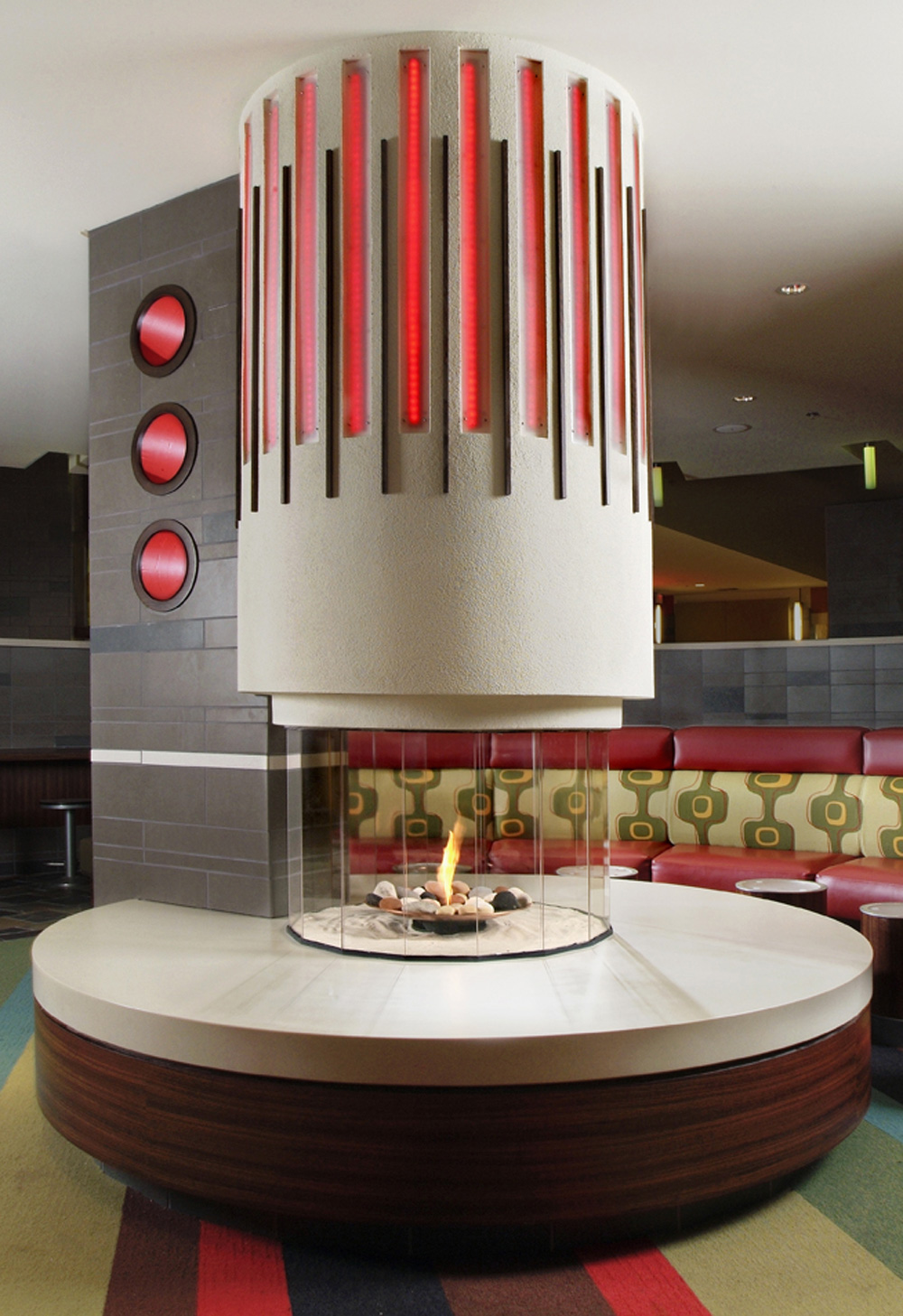Park Royal Food Court Fire Feature – Custom Case Study
VGF has designed and installed many custom projects over the years, indoor, outdoor, large, and small. Here you’ll find a collection a few favourite projects, some straight-forward, some filled with challenges, and others that are just plain ‘ole fun. We put them together to form the Vancouver Gas Fireplaces Custom Case Studies.
When Vancouver Gas Fireplaces (VGF) received the design concept for a “fireplace” at the Park Royal mall food court, we were struck by the uniqueness of the project. It is rare to see a high traffic public area such as a food court go beyond the traditional.
VGF has been setting a trend over the last several years with many of the custom designs we’ve created for private residences. The gas flame is being transformed with a more elemental use of fire: within an enclosure, the flame itself is becoming the attraction without the metalwork and logs.
In the case of the Royal Park food court design, a jet of flame needed to come out of a copper bowl surrounded by a modern cylindrical structure. This structure was to be positioned in the middle of a relaxing circular eating area where large comfortable bench-like seating was set up.
Although the flame and copper bowl were a welcome departure from over-sized gas log-sets typically requested for these types of public spaces, the technical challenge we faced was two-fold: we had not done a burner set-up quite like this before, nor had we tackled a venting and intake solution that involved an exterior wall located approximately one hundred and thirty feet away.
To start, we had to create a torch-like flame that could be controlled by volume. In order to do this, we used welded schedule forty pipe shaped into a square approximately three inches across with a number of 1/8″ holes drilled into the top. It had to be set up to release up to 50,000 BTU’s of gas in a concentrated area. The burner was then welded into a containment pan with a tail coming out the bottom for the gas connection. Pilot tubing and wiring running from the valve and an intermittent electronic ignition modular was then fed up to a pilot assembly welded to the burner.
For the copper bowl we found one initially designed to be set on a stand for wood or coal fires. The bottom was cut out of the bowl and fastened to the burner containment pan. It was necessary to do this so that the burner assembly sat flush with the bottom of the bowl.
Next we designed the power exhaust and the power intake to be enclosed in a custom-fabricated watertight box mounted on a back wall of the mall. The vent pipes for both the air supply and venting ran through the wall directly into the box. They were then connected to the fans, which had their respective vent hoods at opposite ends of the enclosure box. The power vents were engineered to accommodate the vent sizes and requirements for the burner.
In the initial test, the intake push to the fire was of such a velocity that we had a hard time keeping the pilot on. With most of the custom burners Vancouver Gas Fireplaces has designed, the combustion air and dilution air is dispersed through the base of the fireplace and goes both around the burner and up around the edges of the enclosure. At this point, our fire was coming right up through the copper bowl. To solve this problem, the seating of the bowl was adjusted so that the airflow would disperse around the bowl as well as through it.
Thinking about a custom fireplace?
independent preliminary review by the Equipment Approvals Manager of the Gas Safety Authority of British Columbia and a subsequent field review and inspection by Independent Arms Length Government Inspectors.

